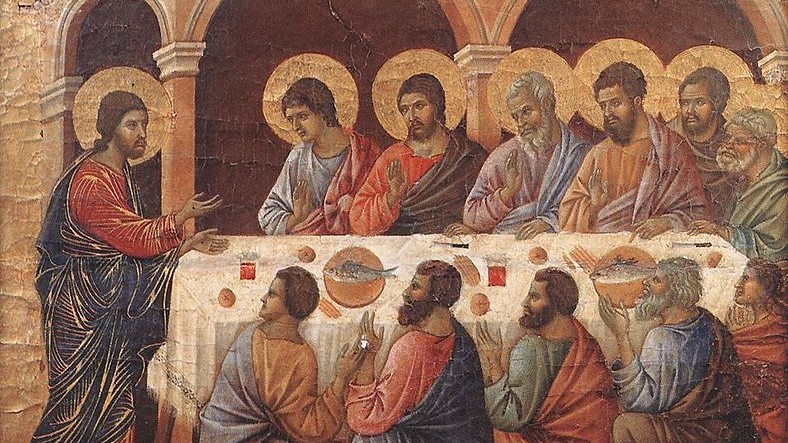SEARCH

I am from Winnipeg, and we just recently celebrated the ordination of a married Catholic deacon to the priesthood. (He was a married United Church minister, then became Catholic and then transitional deacon and now priest in the Archdiocese of Winnipeg.) Can you explain how this came to be and what possible impact this will have for other Catholic married deacons from our diocese in the Roman Rite? Do they all now have the option of requesting ordination to the priesthood? If not, why? If yes, what impact could this have on the celibate non-married priesthood? This seems like an exciting development but not much has been said or explained about it. Thanks and God bless, MaureenIt is a great question. Here is my response to Maureen:
Maureen, You ask a very, very good question. I have been working on a more involved response, but the short answer is, yes, the Catholic Church allows for ministers of other Christian Churches who convert to Catholicism to continue their ministry by becoming Catholic priests – even if they are married. Would you allow me to publish your question with my long answer (which you will get shortly), as part of my "Deacon-structing" blog series? I think your question is one that would interest a lot of people.Needless to say that Maureen did respond allowing me to publish her question. It’s important to note first that priestly celibacy is not doctrine or dogma (read my "Deacon-strucing Doctrine" series – which begins here – to learn what makes doctrine and what is the difference between doctrine and dogma). Celibacy is a discipline. All Eastern Churches (those that are Orthodox and those in communion with Rome) ordain married men to the priesthood, and there is a tradition of married priests in the Roman (Latin) Rite as well. We know that all (except maybe John) of the Apostles were married. It was only in the 4th century with the Council of Nicaea that ordained men could not marry – but the practice of ordaining married men continued until the 11th century. I'd like to take a pause in order to make a clarification: The Church can ordain married men (which is why we ordain married deacons), but an ordained man cannot get married. It was Pope Gregory VII in 1074 who said that to be ordained a man must be celibate. (Even that didn’t mean that they couldn’t be married before or didn't continue to be married; only that after ordination they had to be celibate. It is possible to be celibate and married.) But the First Lateran Council in 1123 declared that clerical marriages were invalid:
Canon 3: We absolutely forbid priests, deacons, and subdeacons to associate with concubines and women, or to live with women other than such as the Nicene Council (canon 3) for reasons of necessity permitted, namely, the mother, sister, or aunt, or any such person concerning whom no suspicion could arise. Canon 21: We absolutely forbid priests, deacons, subdeacons, and monks to have concubines or to contract marriage. We decree in accordance with the definitions of the sacred canons, that marriages already contracted by such persons must be dissolved, and that the persons be condemned to do penance.It was around this time that married clergy in the Roman Rite began to disappear and celibacy became the norm. The second Lateran Council in 1139 said that:
Canon 6: We also decree that those who in the subdiaconate and higher orders have contracted marriage or have concubines, be deprived of their office and ecclesiastical benefice. For since they should be and be called the temple of God, the vessel of the Lord, the abode of the Holy Spirit, it is unbecoming that they indulge in marriage and in impurities. Canon 7: Following in the footsteps of our predecessors, the Roman pontiffs Gregory VII, Urban, and Paschal, we command that no one attend the masses of those who are known to have wives or concubines. But that the law of continence and purity, so pleasing to God, may become more general among persons constituted in sacred orders, we decree that bishops, priests, deacons, subdeacons, canons regular, monks, and professed clerics (conversi) who, transgressing the holy precept, have dared to contract marriage, shall be separated. For a union of this kind which has been contracted in violation of the ecclesiastical law, we do not regard as matrimony. Those who have been separated from each other, shall do penance commensurate with such excesses.By the Council of Trent (aided by the Reformation) the discipline of priestly celibacy was sealed:
Canon 9: If any one saith, that clerics constituted in sacred orders, or Regulars, who have solemnly professed chastity, are able to contract marriage, and that being contracted it is valid, notwithstanding the ecclesiastical law, or vow; and that the contrary is no thing else than to condemn marriage; and, that all who do not feel that they have the gift of chastity, even though they have made a vow thereof, may contract marriage; let him be anathema: seeing that God refuses not that gift to those who ask for it rightly, neither does He suffer us to be tempted above that which we are able. Canon 10: If any one saith, that the marriage state is to be placed above the state of virginity, or of celibacy, and that it is not better and more blessed to remain in virginity, or in celibacy, than to be united in matrimony; let him be anathema.But, from the beginning, there were no requirements of celibacy for the priesthood. This means that the married clergy are part of our Tradition. Right now, it is not possible for a married man to be ordained to the priesthood. Celibacy is a discipline required for priestly ordination. However, it is possible for married clergy from certain other Christian denominations who convert to Catholicism to continue in their priestly ministry. The Catholic Church in the U.S. has been ordaining married clergymen from other Christian Churches following their conversion to Catholicism since 1980. The practice began in Canada and in England in 1994. The ordination of a married man remains an exception and one that is granted only in very specific cases involving men who had already been called to ministry in another church or Christian denomination and later came into full communion in the Catholic Church. How did this come about? Come back next week to find out the development of this teaching. Maureen's question is very pertinent because the ordination of married men is part of the discussions at the current Synod on the Amazon. Pope Francis has said that the Church would consider ordaining married men to serve in areas where there are no priests. You may be interested in watching last month's episode of our show Behold, which featured an interview with the wife of a Catholic priest in the diocese of Hamilton, Ontario. Come back next week. In the meantime, send me questions or topics you want me to deacon-struct. And write to me. What do you think? Should we have married priests? What challenges or benefits do you see to having a married clergy?
 Every week, Deacon Pedro takes a particular topic apart, not so much to explore or explain the subject to its fullness, but rather to provide insights that will deepen our understanding of the subject. And don’t worry, at the end of the day he always puts the pieces back together. There are no limits to deaconstructing: Write to him and ask any questions about the faith or Church teaching: [email protected]
Every week, Deacon Pedro takes a particular topic apart, not so much to explore or explain the subject to its fullness, but rather to provide insights that will deepen our understanding of the subject. And don’t worry, at the end of the day he always puts the pieces back together. There are no limits to deaconstructing: Write to him and ask any questions about the faith or Church teaching: [email protected]